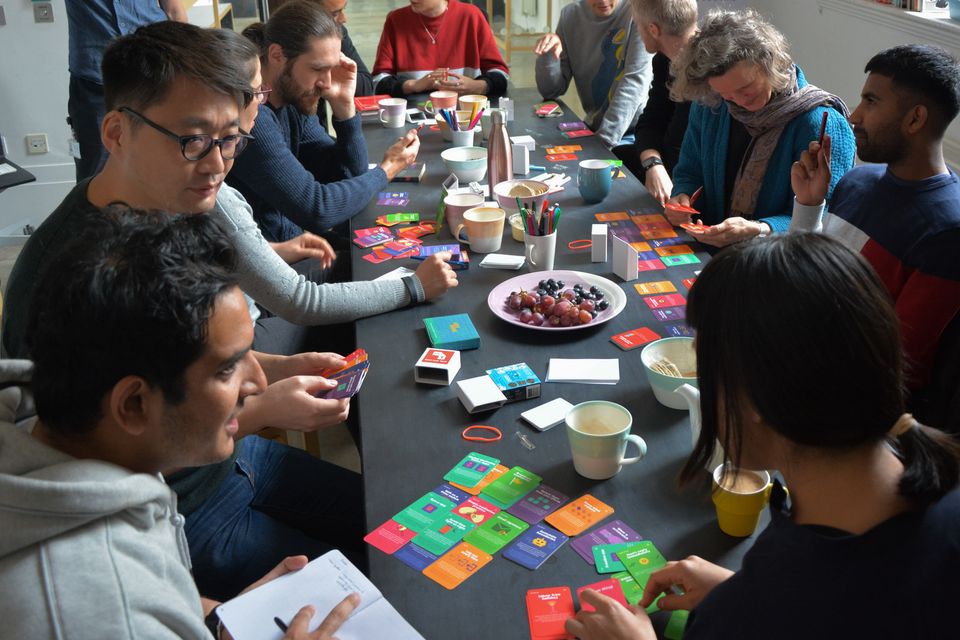Digital Habit Lab Part I — Discovery & Prototyping
Navigating the discovery phase to define a new product category and build out a prototype to validate its merits.
Context
I founded Mind over Tech in early 2018 to create learning experiences and resources that help people build a more intentional relationship with their technology.
We were one of the earlier movers in the Digital Wellbeing space and, while there were some useful parallels with other existing products, it was clear that there were lots of opportunities to carve our a new category of product.
To go about this I took the time to understand the directions that other companies had taken, and used this knowledge to run a series of experimental workshops with the goal of arriving at a prototype of some sort, whatever that turned out to be!
- Date
- 2018-2019
- Role
- Creator
- Responsibilites
- Researching, Prototyping, User Testing, Product Design
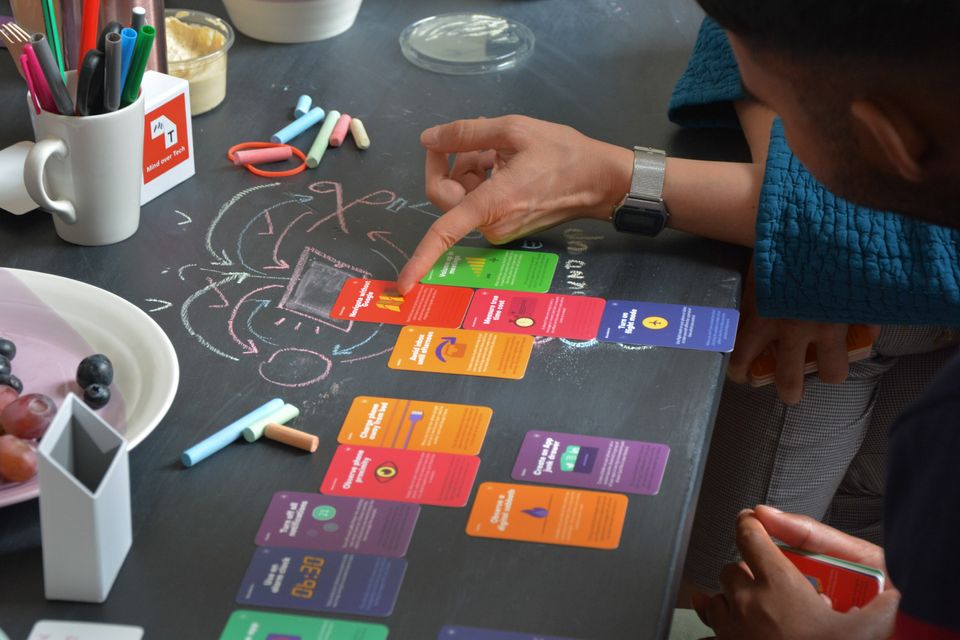
There is a lot to cover in this project, so it’s been broken out into three parts:
- Part I — Discovery and prototyping for a new product. [You are here]
- Part II — Designing a production ready unit.
- Part III — Executing a successful marketing strategy.
Understanding what is already out there.
Having already been interested in the Digital Wellbeing space for some time before officially founding Mind over Tech, I was already aware of a number of different companies working on related solutions.
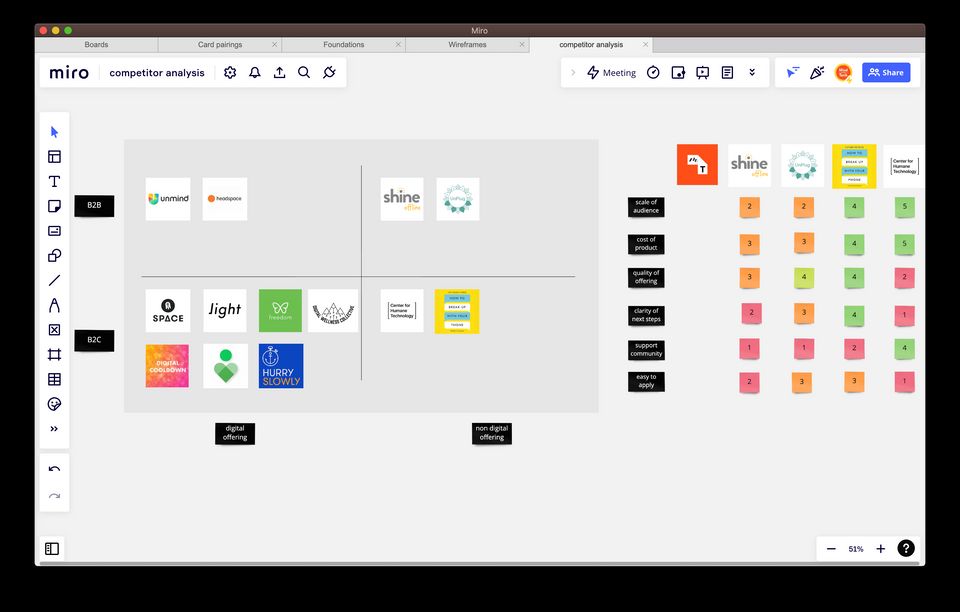
I began by spending some more time going deeper with a formal analysis to understanding what was out there and how the varius offerings differed. This confirmed my hunch that the definitions of Digital Wellbeing are very broad, and that existing offerings were only speaking to some of the existing challenges.
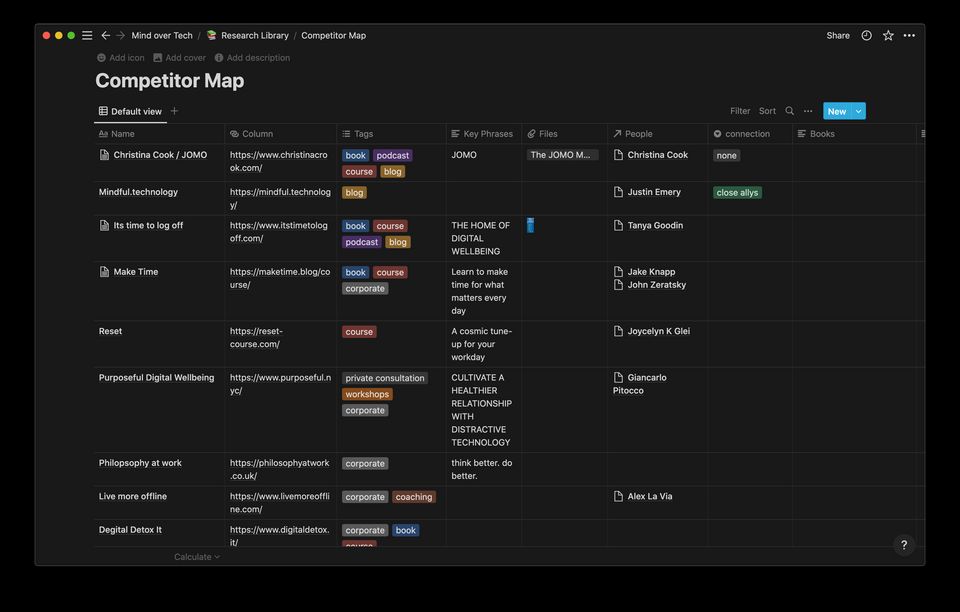
By mapping out clearly the many various subspaces within Digital Wellbeing I could identify that there was a clear gap for non-digital, in-person solutions—specifically focused on building positive digital behaviours for individuals.
I also made the time at this stage to reach out to founders of some of these other companies, and—where possible—I met with them to understand more about how they landed on focusing on one particular area.
Discovery Workshops
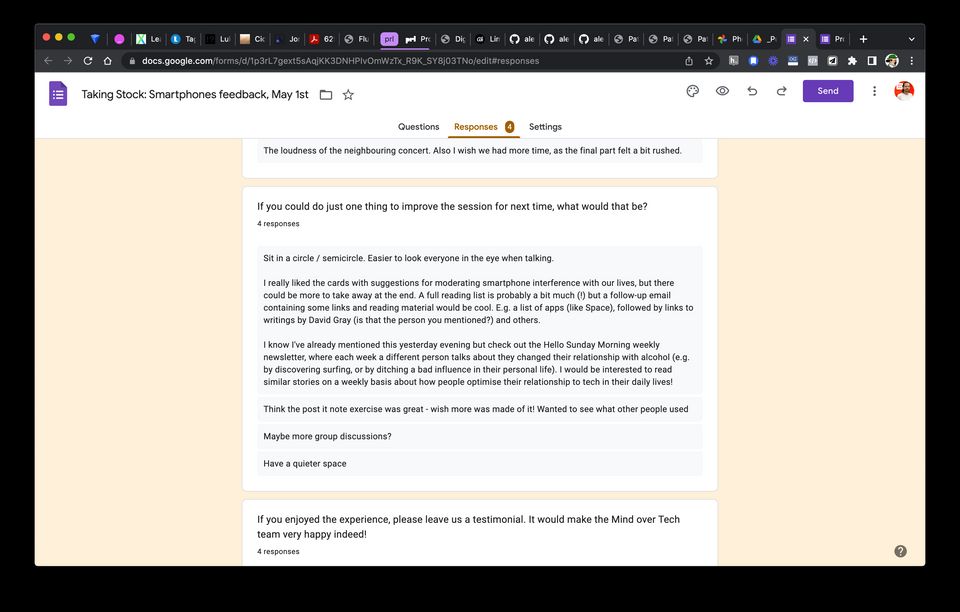
Having established that there were some interesting opportunities in developing a non-digital solution, I proceeded to run a series of experimental workshops to learn more.
The purpose of this was to understand better the problems that people faced when trying to improve their digital behaviours through holding open group discussions. It would also provide opportunities to test out some different types of solutions to get an initial gut feel for what was landing well (and what wasn’t).
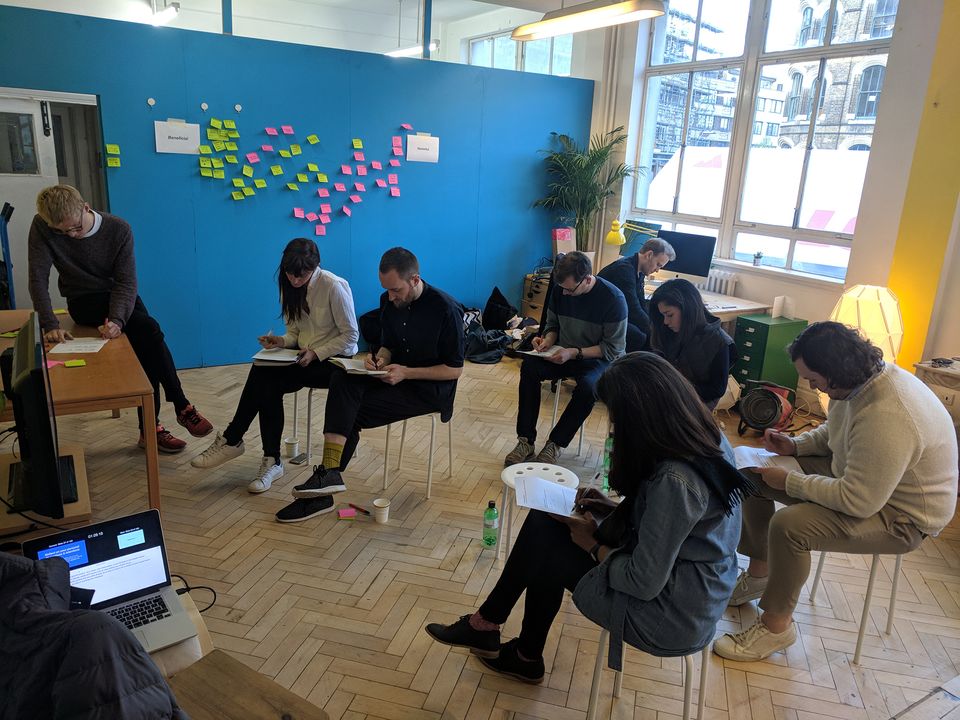
To begin with, gathering quality feedback was proving quite difficult as people engaging in the workshops were either friends (who were giving fairly biased answers) or were complete strangers who were not so inclined to take the time to respond.
This was rectified by building the feedback completion into the session itself (via an annonymous form) and this helped validate my own observations from the sessions that there was too much emphasis on personal reflection and not enough practical prompts.
It was also becoming clear that people were struggling to effect any real changes in their bevhaviour. In one magical moment, the whole group enthusiastically agreed with someone who shared:
“I know that I can reduce the number of notifications, but I never actually get around to doing it!”
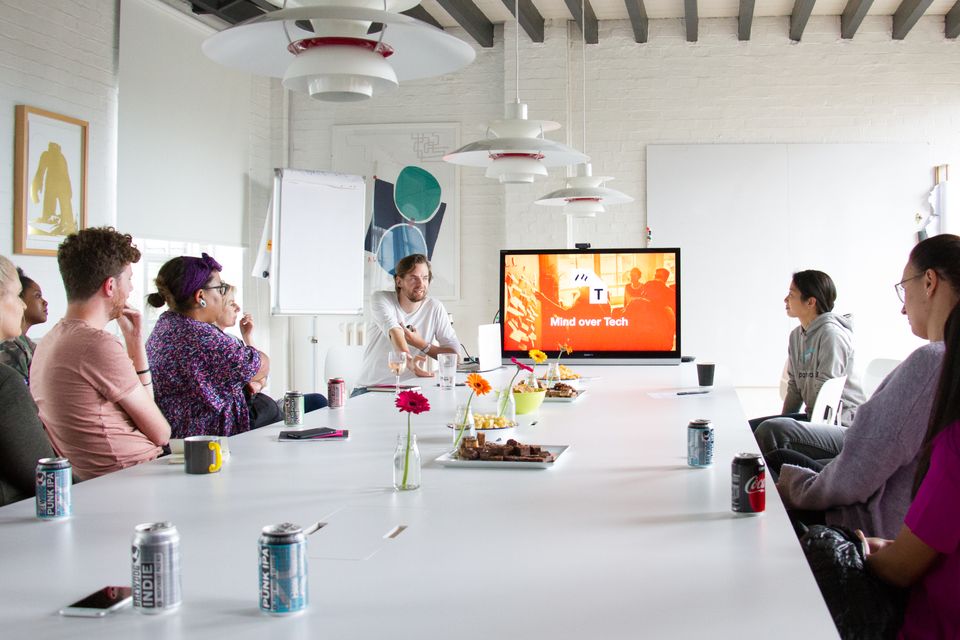
This was really beginning to point to the crux of the problem—that even with clearly understood methods to stay in control of digital habits, people were still struggling with their own agency to make any real changes.
This insight lead to the creation of a set of challenges that were introduced into the next workshop, with the purpose cutting through blocked habits and jolting people into action.
They proved to be really popular, and also naturally became a really useful resource for people to engage with their digital behaviours after the workshop.
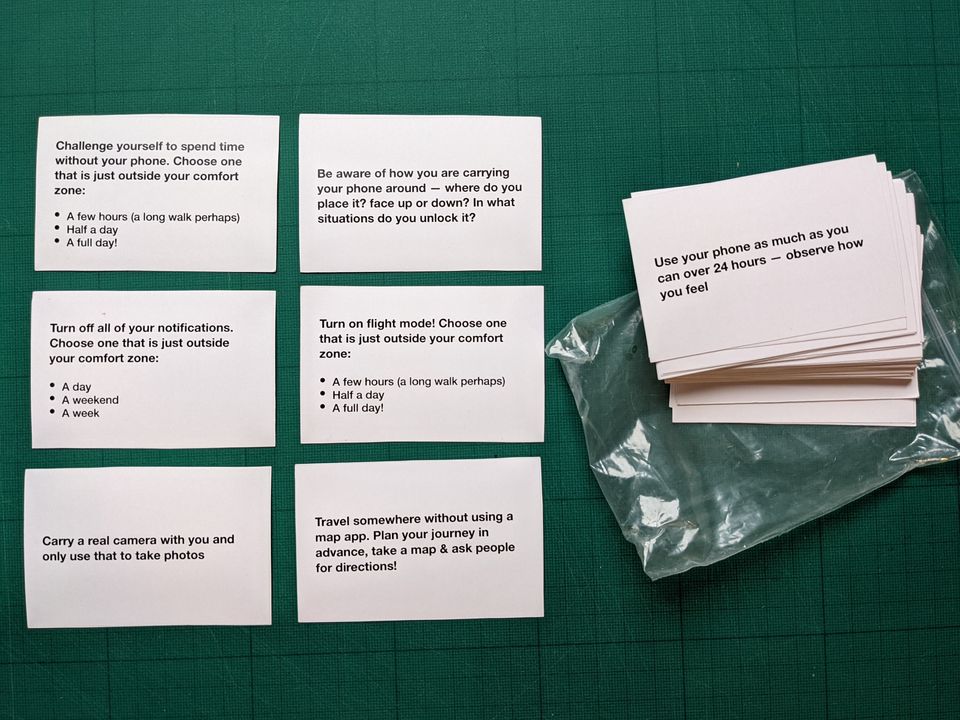
Zooming in on the challenge cards
At this point there was enough ongoing positive response to these simple challenges to start to increase the number of them. I also went deeper with related research for each of the challenges to better understand the potential benefits of the various new behaviours.
While continuing to gather feedback, it was becoming clear that it didn’t matter if people felt the challenge wasn’t something that they would do regularly in the future—the act of being forced to try something new, even just once, was creating lightbulb moments in people and helping them understand something about how their current digital habits either help or hinder them.
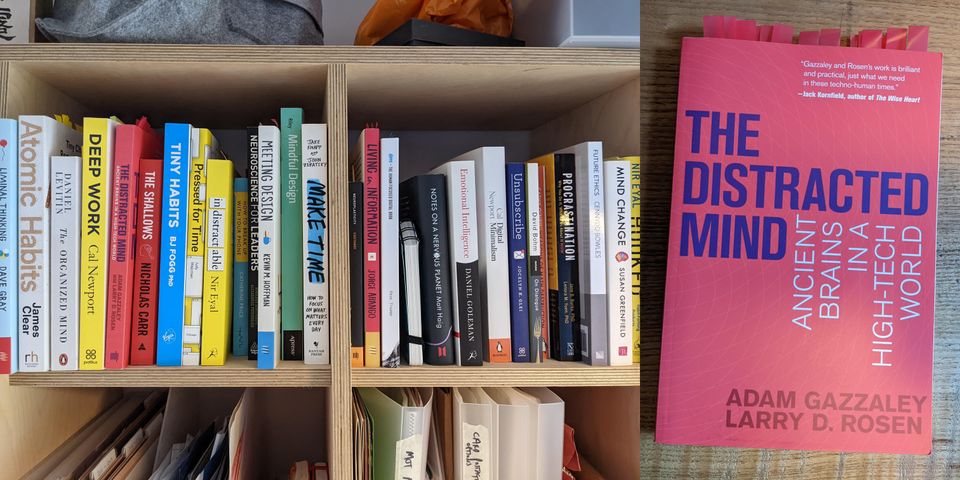
I began to read through as much research and literature about habits and digital wellbeing as possible, collating even the most tangental methods that I could identify into a single database.
The emerging collection of challenges were generally not complicated in themselves, but they they felt impactful because people either lacked an awareness of their existence, or a framework/impetus that was encouraging them to actually try them out.
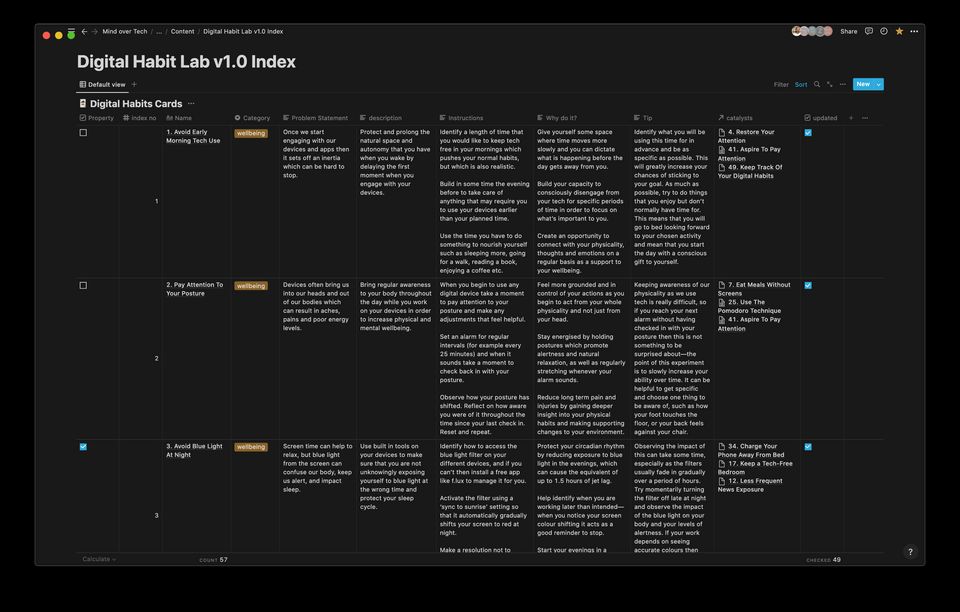
As I ran more workshops, the value of people having access to this collection of challenges (as well as simple guidance about how to engage with them) was proving itself again and again.
As such I made the decision to try and develop the slips of paper into a more engaging format—a nicely designed deck of cards that individuals could keep and work through at their own pace.
Challenges → Experiments
One potential obstacle that was emerging from conversations with early testers was that it was difficult to maintain motivation in trying new challenges if you felt like you hadn’t succeeded in previous ones.
The sense of failure was leading to feelings of not being ‘good’ at developing better digital habits.
At this point I returned to my research on habit change,
and recognised that when it comes to sustaining willpower, systems were more important than goals.
In response I decided to reframe the language we had been using—challenges were now called ‘experiments’.
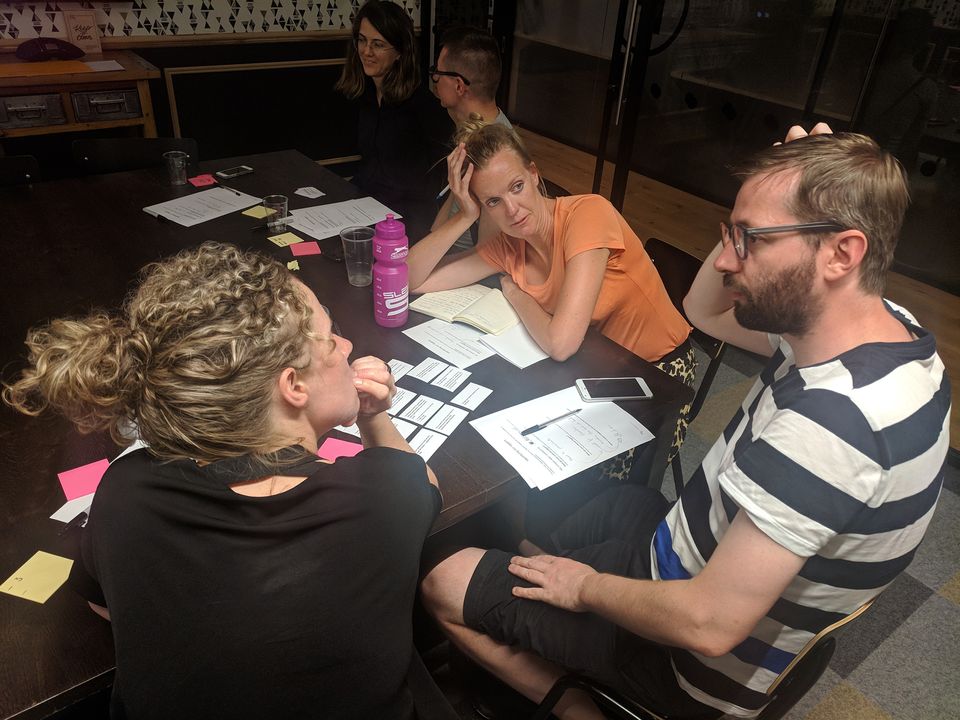
The following few workshops proved that this simple shift of language helped allieviate the obstacle of perceived failure, with people feeling more comfortable with the value of having given the experiment a go, rather than having ‘failed’ a challenge.
Introducing taxonomies
The number of experiments that were in the set was increasing rapidly, and this introduced a new problem—that it was overwhelming for people to know where to begin.
I tried limiting the number of experiments that people had access to early on, but this was unsatisfacory as it reduced the chances of people finding an experiment that really spoke to them.
As an alternative, I decided to try and group related experiments together under different taxonomies—the idea being that it may be easier to choose a category that you’d like to explore for experiments, instead of simply searching through 40+ cards.
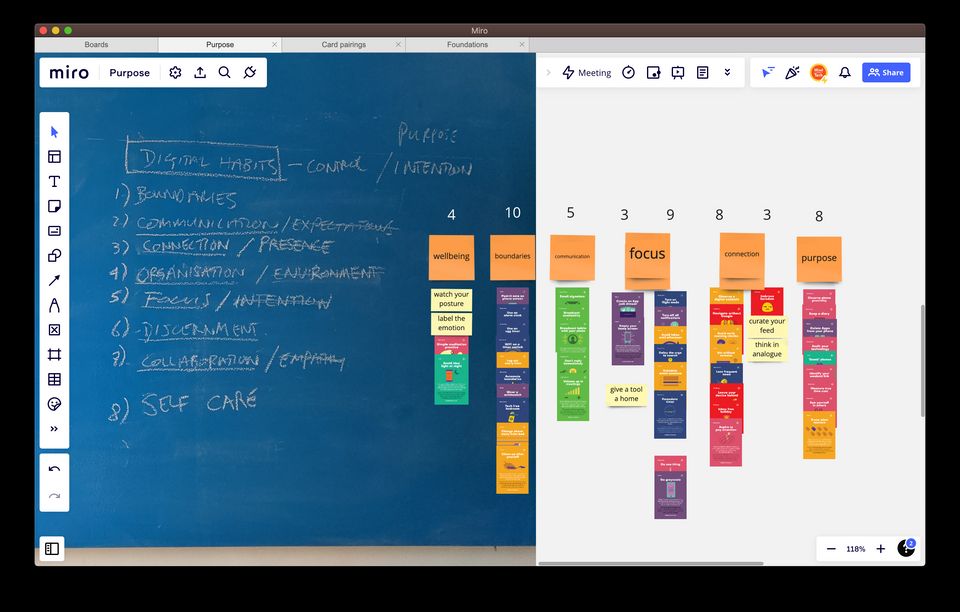
It took some time to boil the taxonomies down to the right amount—not too many, not too few—but after a few attempts 6 clear categories emerged:
- Wellbeing
- Boundary
- Communication
- Focus
- Connection
- Purpose
The feedback was positive that these groupings made it easier for people to choose an area that felt important to them, and begin their experimenting there.
Designing the prototype
I was now ready to try and build out a first complete prototype of the collection of digital habits.
It had become clear that the purpose of this deck was to take a collection of simple digital habits, and product-ise them to make it as easy as possible to apply and benefit from them.
I wanted the design of the prototype to enable this sense of being easy to pick up the habits, so I used bright colours and imagery to integrate James Clear’s 4 laws for establshing habits: that they should be obvious, easy, attractive and satisfying.
I also imposed a strict time period of 48 hours for the creation of the prototype to stop myself getting lost in the design process.
I decided to get the deck printed via Moo.com, as it was a very cost effective way to get a set of 50 unique cards printed and presented in a box.
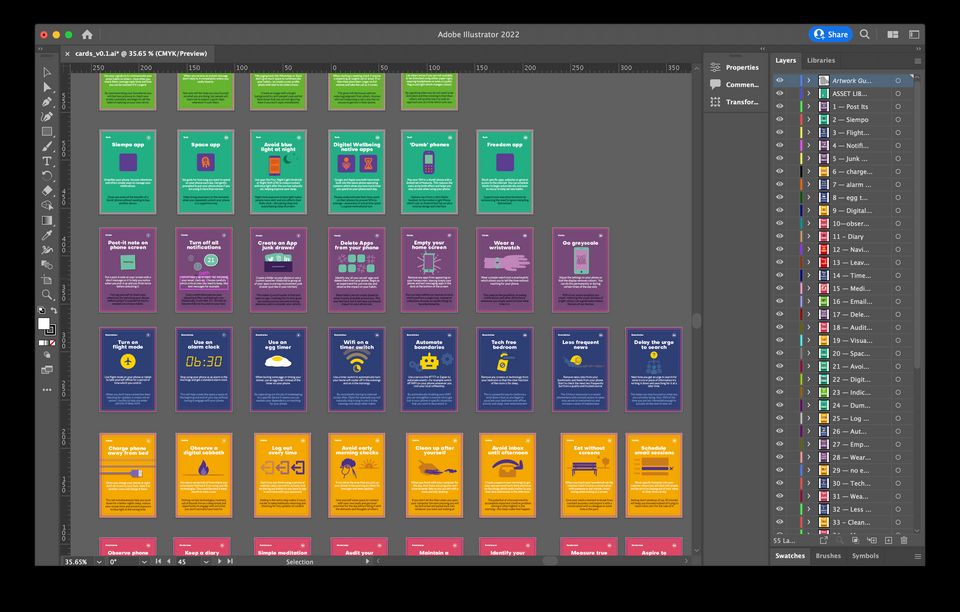
I wanted to use strong colour themes to represent the various taxonomies that had been identified, and also use fun and simple imagery to help people identify the various experiments.
I decided to use vectors from the Noun Project to help speed up this process.
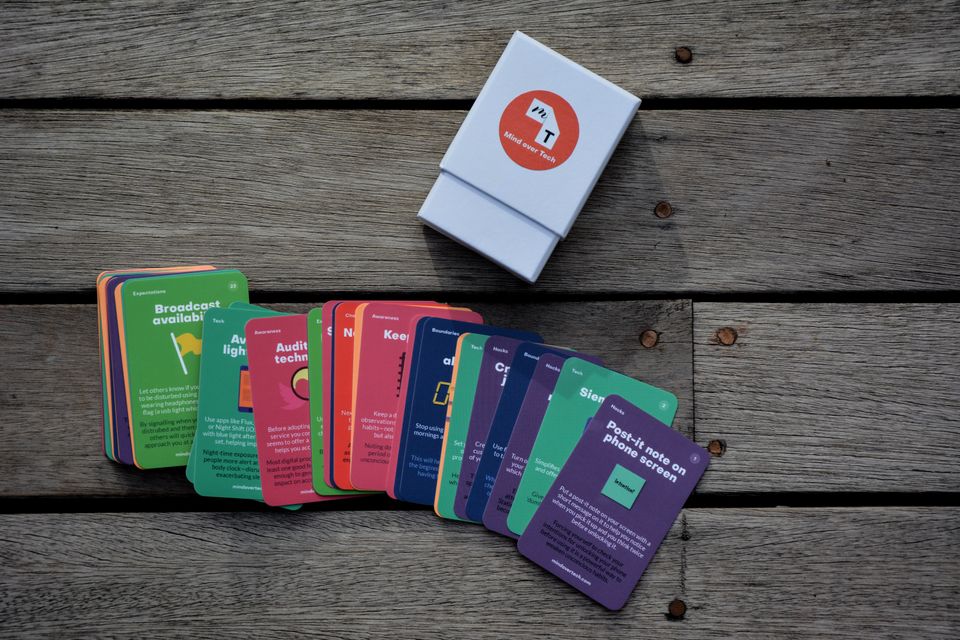
Further Testing
Happy with the result, it was time to double down on testing the new format in a further series of workshops and get as much experience and feedback from using the deck as possible.
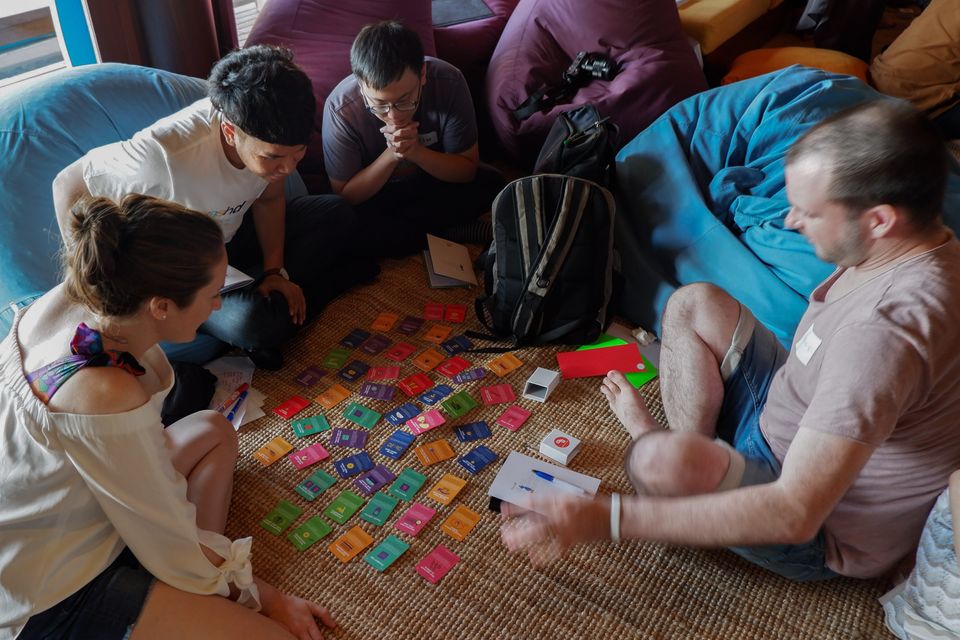
I set about scheduling a series of 15 different sessions, each with a different audience—from coroporate, to individuals; from teachers, to creatives and even a group of game designers.
This resulted in a huge amount of recorded feedback, which was collated into a Miro document and then processed to identify a backlog of issues that would inform the development of the next version.
